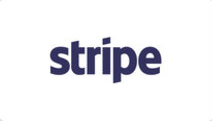Full Name
+44xxxxxxxxx | abc@xyz.com | Post Code, City, UK | Driving License | Full working rights | LinkedIn
Profile:
Motivated IT professional with a strong foundation in implementing network technology for businesses, eager to transition into a junior-level Cloud Computing Engineer role to further develop and apply existing cloud infrastructure knowledge. Committed to excellence, I excel in communicating with technical professionals and end-users alike, adept at identifying and translating business goals into actionable strategies. My goal is to leverage my skills and passion for cloud technologies to contribute effectively to your organization’s success.
Tools & Technology
- Cloud Platforms: AWS, Azure, Google Cloud
- Cloud Tools: AWS Cloud Resources EC2, ELB, Auto Scaling, RDS, Cloud Front, Cloud watch, SNS, S3, Cloud Formation, Virtual Machines Amazon ECS, AWS Lambda.
- Cloud Services: Compute, Storage, Database, Networking
- Cloud Security: Best Practices, Compliance Standards
- Troubleshooting: Cloud Services and Infrastructure
- Automation: Terraform, Ansible
- Monitoring: Cloud Monitoring Tools
- Networking: VPCs, Subnets, Routing
- Scripting: Python, R, Java
- Databases: SQL, MySQL, Oracle
- Operating Systems: Windows 7, 10, 11 / Linux, Ubuntu
Training & Certifications:
- AWS Certification (Feb 2024)
- AWS Solution Architect Associate Certification Amazon (Nov 2023)
- AWS Database Migration (Training)
- AWS SysOps Associate, Developer Associate (Training)
- AWS Technical Essentials (Training)
- Java, Python, SQL Certification (Training)
- PCEP- Certified Entry-Level Python Programmer (Sep 2022)
Experience:
Junior Cloud Support Trainee
Fortray Services LTD, London 07/2023 – Present
- Assisting in the deployment, monitoring, and maintenance of cloud infrastructure.
- Providing technical support to customers or internal teams on cloud services and products.
- Troubleshooting and resolving issues related to cloud services, ensuring minimal downtime.
- Assisting in the implementation of security best practices for cloud environments.
- Collaborating with senior cloud engineers to optimize cloud infrastructure performance.
- Participating in training and development programs to enhance cloud computing skills.
- Contributing to the documentation of processes and procedures related to cloud operations.
- Staying updated with the latest trends and technologies in cloud computing to enhance job performance.
- Supporting in the implementation of disaster recovery and backup strategies for cloud environments.
- Assisting in the evaluation and recommendation of cloud solutions to meet business requirements.
Capstone Project:
- Deploying an Online Movie Watching Application on Cloud.
- Deploying an Online Doctor’s Clinic Application on Cloud.
- Deploying a Restaurant Application to the Cloud.
- Deploying Cart Management Application to Cloud.
- Configure and connect a MySQL Database Instance with a Web Server.
- Set Up and Monitor a WordPress Instance for Your Organization.
- Infrastructure Deployment for Real-Time Data Management Requirements on the AWS.
- Email Notification and Movement Process in an Organization.
- Setting up a website on Cloud.
- Managing tightly coupled architecture using Amazon SQS.
- Architecting a website using Serverless Technology.
- Scaling the EC2 instance based on Monitored CloudWatch Metrics.
- AWS Technical Essential Project – Server Monitoring.
Education:
Master of Business Administration Sep 2021 to Oct 2022
University of Westminster, London
Bachelor in Business Administration Jun 2018 to Jul 2021
University of Lucknow, India
Reference:
Will be available upon request.















